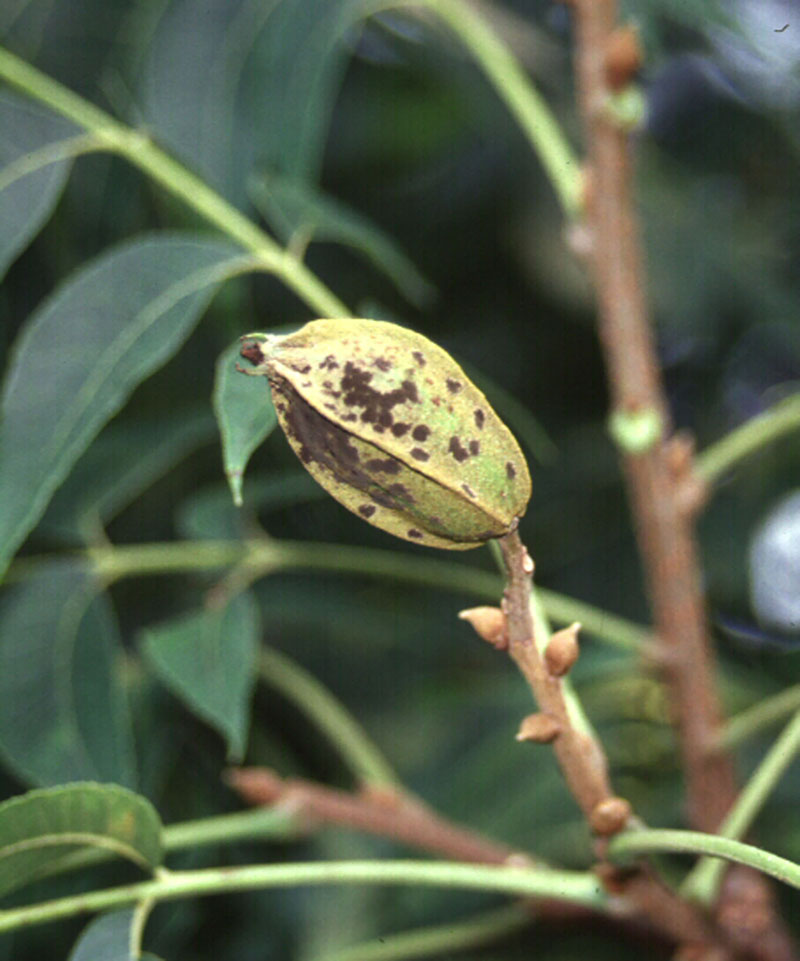By Clint Thompson
The University of Georgia (UGA) pecan team is emphasizing scab disease management, since June and July are critical times for disease control.

According to UGA Extension pecan blog, plant pathologist Jason Brock’s recommendations are based on Extension plant pathologist Tim Brenneman’s research regarding scab disease:
With Desirable or any variety with similar scab susceptibility, a rotation of Elast/Tin with Miravis Top is the strongest option. You could use consecutive applications of either, but keep in mind Miravis Top use restrictions include a 14-day minimum application interval and a maximum of 4 applications per year. In most cases, half rates for Elast/Tin are suitable. Research trials have shown that increasing the rate of Elast to 37 fl. oz. while mixed with Tin can provide better scab control, but only when disease pressure is high. Unless we get into a rainy summer, the half rates are the better option.
Cultivars with relatively low scab susceptibility provide more options for fungicide selection. In addition to Miravis Top, Elast and Tin (either in a mix or used stand-alone), other fungicides are suitable for these cultivars. Another tank mix combination that has provided good nut scab control is a Group 3 (DMI) + Group 11 (strobilurin). This combination is available in a number of premixed products. A newer option that we have recommended is a 3-quart rate of a phosphite. While the phosphites’ strength is in foliar disease control, a high rate application is suitable for nut scab control of certain cultivars with low scab susceptibility.
Aside from fungicide selection, important factors in scab control will be timely applications and good coverage. Pay close to attention to rain forecast and try to stay ahead of scab development; however, do not sacrifice good coverage by traveling too fast or trying to spray when weather conditions are detrimental to good coverage. Always remember to rotate chemistries regularly to manage fungicide resistance.
Light Scab Disease
In a previous VSCNews story, UGA Extension pecan specialist Lenny Wells said scab disease is currently light, but there has been “scabby weather” recently. The rainy weather because of Tropical Storm Cristobal last week could be a reason scab disease incidences begin to spike. Wells said it usually takes a couple of weeks before growers start seeing scab because of excess rainfall.
Scab is a fungal disease that infects the leaves or nuts of pecan trees. If it hits the nut early enough, scab can cause the pecan to blacken and fall from the tree. Some growers spray between 10 and 12 times during an average year to fight scab, Wells said. Scab thrives on trees that have received moisture. That is why a quick rain event is important and not prolonged rainy weather of several days in a row.









